"Typically, with innovations, it always takes a while to win everyone over to something new. In the end, however, growers often like innovation." This is what Agro Care's Paul Grootscholten predicted back in spring 2022 about the introduction of Source.ag's smart software at the tomato-growing company. The story of the experience of grower Tomasz Golisz, who runs 10 hectares of tomato cultivation in Rilland, attests to this. "My day starts and ends with Source. I like working with modern techniques."
It was in Rilland that the growth story of the tomato-growing company, which aims to grow to 1,000 hectares by 2030, began. With more than 260 hectares spread across the Netherlands, France, Morocco, and Tunisia, the large tomato grower is well on its way. Rilland was the first cultivation location in 1997. Tomasz has now been working there for sixteen years, first as a crop protection worker and now as a grower of mini plum tomatoes of the ToBRFV-resistant variety Sunstream Lau.
Data-driven growing should help Agro Care in their growth ambition. From the beginning of Source.ag, Agro Care was a development partner and involved in the development of the products now known as Source Track and the Source Plant App. Agro Care took Source Track into use in July 2022 and is now implementing it at all their sites. First in the Netherlands, including therefore in Tomasz's greenhouse.
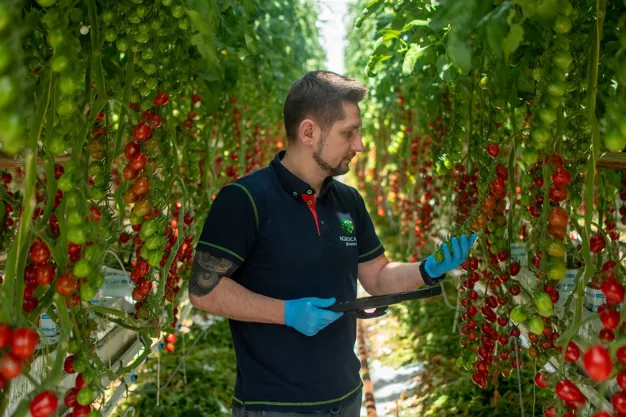
Saving time
In Rilland, the Source Track dashboard provides key data from three crops. It allows for close monitoring of the crop, giving Tomasz a complete and accurate overview of all important cultivation parameters for his crop. Previously, this took a lot of time. Measuring the plants was one cause of this. Manual calculations could sometimes take up to 27 minutes per 10 plants, knows Ernst van Bruggen, co-founder of Source. "Source extracts data from different systems to give those cultivation parameters to the grower." One such system is plant registration. Another important source is the climate computer.
"The best thing about Source Track is that you have all the important information and key performance indicators (KPIs) of all your crops in one overview with the flexibility to choose which information you want to see," says the grower. "In addition, I am also a big fan of the Source Plant App. It is a big improvement over our previous way of measuring because it is user-friendly, visually appealing, and less error-prone."
Fewer errors
Before the advent of Source, they had to manually enter plant measurements in tables at Agro Care. "The Source Plant App lets you see the whole plant digitally, making it easy to measure the plant." Calculations that were previously done manually are now automated with the Source Plant App.
Ernst: "To start with, for example, growers would manually write the date on a label to track the truss development time of the fruit. Now, this is automatically calculated by Source. This makes data more reliable and less error-prone. It is also a valuable step in preparing for AI." Source uses the input from the measurements of the specific plant species and feeds this to the AI models in Source Cultivate and Source Control, the next tools the Amsterdam-based company will bring to the market.
Harvest prediction
A lot of time also went into making harvest predictions. At Agro Care, those forecasts were made using various Excel files. This was time-consuming. The forecasts are very important, Tomasz stresses. "At our packaging company, Greenpack, they like to know exactly what production is coming."
The growers lacked a tool to consolidate all the data, which meant that there was no overview of all greenhouses, nor was it possible to compare current cultivation data with the cultivation plan. With Source's tools, Agro Care now has these possibilities. This also allows any changes in cultivation to be implemented more quickly.
Green tiles
Last year, Tomasz spent six months getting to know Source, but this season, for the first time, he is working with a cultivation plan created via Source. For this, he filled in an extensive file with data on planting distance, planting date, setting, and flowering speed, among other things. Source processed that data in Source Track.
The plan resulting from calculations based on all the data follows the grower. Source Track works with green and red 'tiles' that allow the grower to see the most important parameters at a glance. Although it is a serious business that involves growing tomatoes optimally, it is a bit like a game. Yet growers do not go out of their way to always get green tiles immediately. Tomasz is realistic. He doesn't immediately start turning all the knobs if a tile is red and doesn't flinch if a figure is 'a point below the norm'.
The grower follows the outlined plan. Twice this season, he did decide to adjust something. The cultivation plan is based on radiation sums and weather conditions, among other things. "We are 27% behind in terms of light radiation compared to last year. I checked it last week (in week 33 ed.)." To give good crop forecasts, he adjusted kilograms and settings, for example. "A 1 or 2-tenths lower flowering rate still gives a cluster less after a few weeks. I take that into account. Fortunately, our production is not also almost 30 percent lower. We have good varieties, and a good greenhouse climate also helps."
'On track' every day
Agro Care grower Tomasz is highly motivated to keep improving and to learn from other growers at the tomato farm. Being able to compare his cultivation plan with that of other growers at Agro Care is very valuable to him. Sharing, discussing, and learning is easier and more efficient because everyone uses the same dashboard in Source Track.
How many locations are there actually, we ask him as he sits at his computer in his little office on a summery August day. One, two, three, 10, 20, we hear him count aloud on his computer screen as he logs into Source. "29 locations I can see," he says. Compared to some Agro Care colleagues who have been around for decades, he is a relatively young grower. He has now been in this role for six years. "I can learn from my colleagues. That's why I also enjoy seeing 'who does what' from time to time via Source."
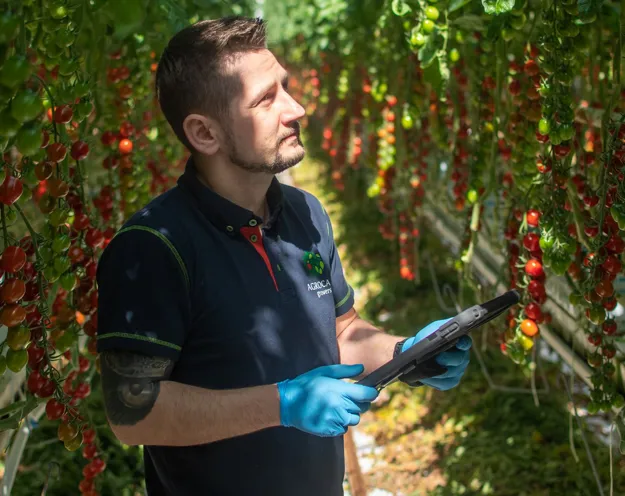
Agro Care can now efficiently compare various KPIs between greenhouses, such as kilograms harvested, waste, and parameters on climate and irrigation. In Source Track, the grower can specify the desired relationship between 24-hour and irradiance. The grower has a target value based on expected irradiance (sunlight and lamps). Every morning, the grower can then see whether the optimal 24-hour period was achieved the previous day based on the total irradiation realized.
For example, Source's tools provide the calculated 24-hour temperature. That is a dynamic target for greenhouse temperature for a 24-hour period based on the true amount of radiation received in relation to the realized 24-hour temperature. It also shows the realized 24-hour temperature. That is the average temperature measured in the greenhouse from sunrise to sunrise the next day.
Source's tools also provide data about irrigation, for example, on the number of turns to drain, entering, and watering per radiation sum. It also shows the total drain percentage compared to the real watering measured in the period from sunrise to sunrise.
Tours of the greenhouse
For the grower, it varies from season to season, which figures he looks at first. "The first thing I do in the morning is look at my key KPIs in Source Track. I want to know right away what has been achieved in the past few days. What is the 24-hour temperature? What was the pH of the drain?
"After checking my KPIs, I make my rounds in the greenhouses to check if my data is correct. For example, I look at irrigation, then I look at my KPIs in Source, and manually check if my sensors are working properly. After my rounds and plant measurements, I sit at the computer again to check my KPIs and make decisions to get the best possible results for my harvest season. My day starts and ends with Source."
Higher humidity maintained
Source Track's flexibility in choosing what information to enter when creating a cropping plan and what information to leave out is of great value to growers, Ernst notes. "It allows growers to decide which KPIs are most valuable to track that season, provides insight to make regular adjustments, and optimizes cropping plans with current results."
Source Track provides growers with a constant, accurate view of the crop, giving Agro Care the insight to make adjustments based on learning moments throughout the season. Tomasz gives the example that with Source's insight, he adjusted the humidity in this season's cropping plan by keeping it at 80% instead of 75%, with good results.
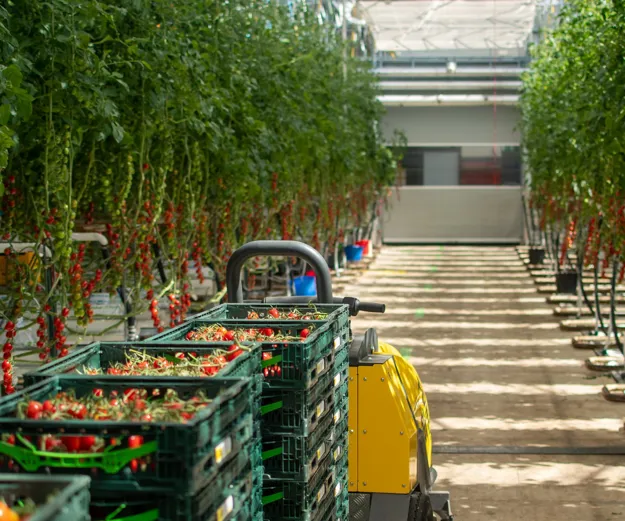
New steps
Agro Care and the Source team meet regularly, even now that the large tomato grower is now working fully with the software, to continue to learn from each other. "The feedback to the Source team, during these sessions or at other times, is useful," Ernst finds. "The suggestions are often translated into new releases of the software."
For the future, Tomasz is looking forward to working with Source Cultivate. This is Source's solution to support growers in determining the best cropping strategy by simulating crop developments. This leads to highly accurate crop forecasts, Ernst hints. Tomasz already received training with his colleagues about it. "A colleague in Rilland is also testing it on a small scale already," he says. He himself, with the help of Source, will start thinking about the cultivation plan for next season in the near future. "I'm already thinking about it and will actually make the plan in October." Just in time to plant the new tomato plants in November.
For more information:
Source.ag 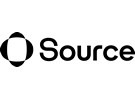
info@source.ag
www.source.ag/ai/
Agro Care 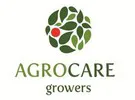
info@agrocare.nl
www.agrocare.nl
